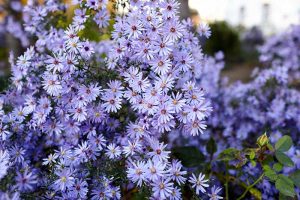Tender dahlias are dazzling summer flowers, and their growth as annuals or perennials depends on your hardiness zone.
Botanically, dahlias are cold-tender herbaceous perennials grown from tubers, with a preference for warm days and moderate to coolish nights.
Late season darlings, they put on a magnificent and lengthy floral show, blooming from mid-July until they’re felled by frost.
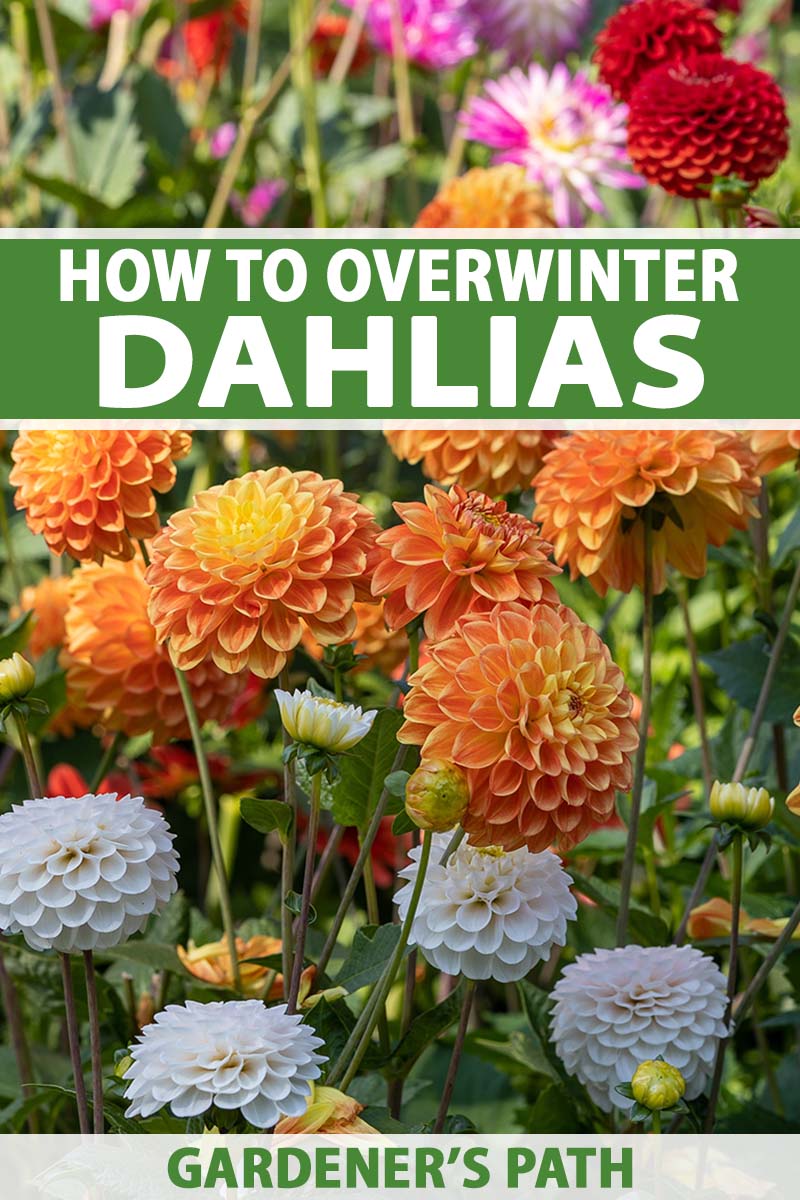
We link to vendors to help you find relevant products. If you buy from one of our links, we may earn a commission.
These showy ornamentals come in a wide range of colors and sizes, with 15 different flower types and almost 60,000 cultivars – so there’s no shortage of choice for your garden!
Natives of Mexico and Central America, dahlias are hardy in USDA Zones 8 to 11, where they can be grown as perennials.
In Zones 7 and below, they’re typically grown more like spring-planted annuals that are then lifted in fall and stored for winter.
But with the right protection, many gardeners overwinter them in Zones 7 and even 6 with a successful return each spring, no digging required. I’ll tell you how in a bit.
So, whether you grow them as annuals or perennials, we’ve got you covered when it comes to overwintering tender dahlias.
Here’s everything you’ll find up ahead:
What You’ll Learn
Dahlia Overwintering Basics
Overwintering is the practice of providing tender plants with protection to survive cold winter weather.
It’s most beneficial for tropical and semi-tropical plants that are cold tender and can’t survive freezing temperatures.
But also helps to protect against freeze and thaw cycles that can displace roots and heave crowns, exposing them to the elements.
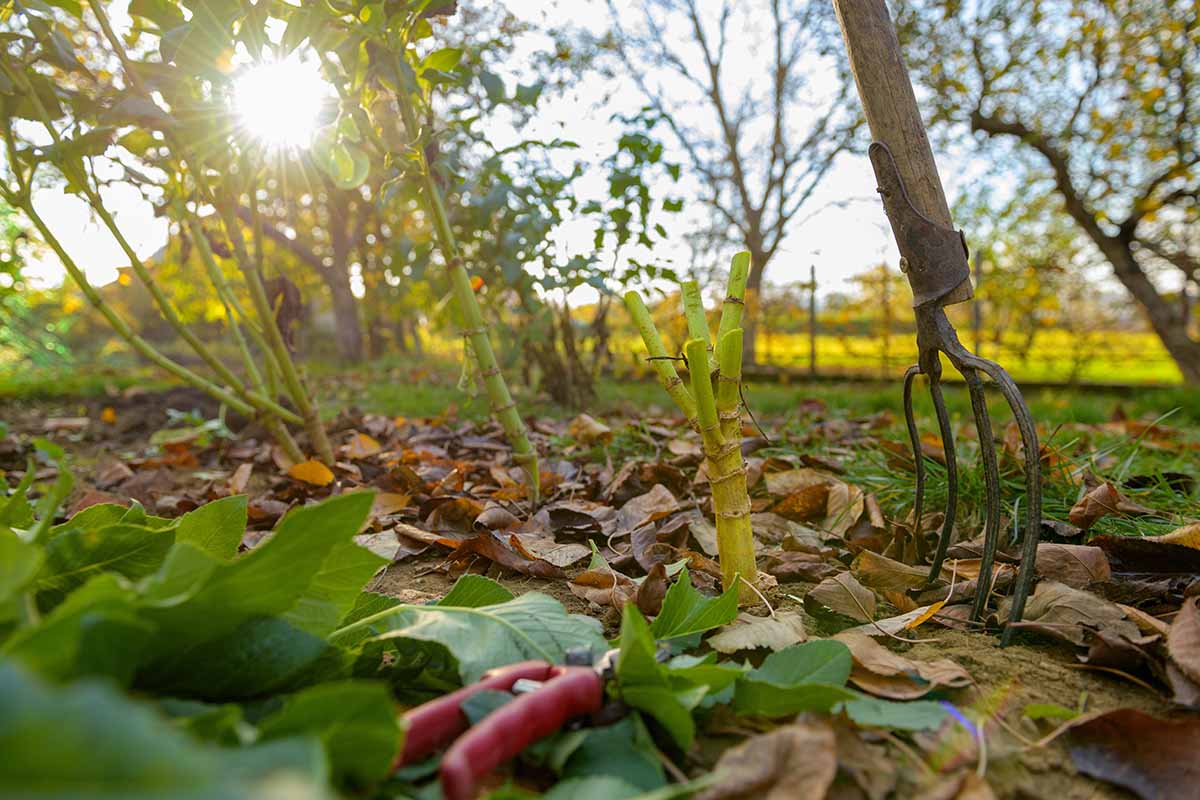
To overwinter tender tubers, they must be located in well-draining soil because they can’t tolerate wet conditions.
If the roots are left to sit in water in cold temperatures it can lead to problems like crown and root rot or tuber collapse.
After the first hard frost, or by mid-November, use clean, sharp shears to cut back the flower stems to a few inches above the soil line.
Cutting the stems at the end of the growing season helps to promote the development of growth eyes on the crown.
The growth eyes are where new growth sprouts from, and the more eyes there are, the more flowers there’ll be as well.
If the stems are still green and rigid, after cutting them back, slash them lengthwise to the soil line – the hollow stems are perfect for collecting water.
As a little aside, in their native Mexico, the Aztecs used long stem sections of tree varieties to carry and store water, and gave them the name acocotli, meaning “water cane.”
Unfortunately, in the garden, water or ice-filled “water canes” can lead to issues like crown and root rot – slashing the green stems prevents the storage of collected rainwater.
However, if the stems are already starting to decay from cold weather, they won’t hold water and don’t require slashing.
Clean up the soil surface over the root zone, raking to remove all green or decaying plant matter, twigs, and woody stems. If you used a summer mulch, remove it as well.
If you can’t overwinter your tubers in the ground, you’ll need to cultivate them as annuals. If you don’t wish to toss them entirely at the end of the season, you have options!
After cutting down the stems, lift and store the tubers for winter – this guide has all the details on how to lift dahlias for winter storage.
Zones 10-11
If you live in USDA Hardiness Zones 10 to 11 where winter temperatures rarely hit the freezing mark (32°F), your plants can be left in the ground without additional protection as the soil itself provides ample insulation.
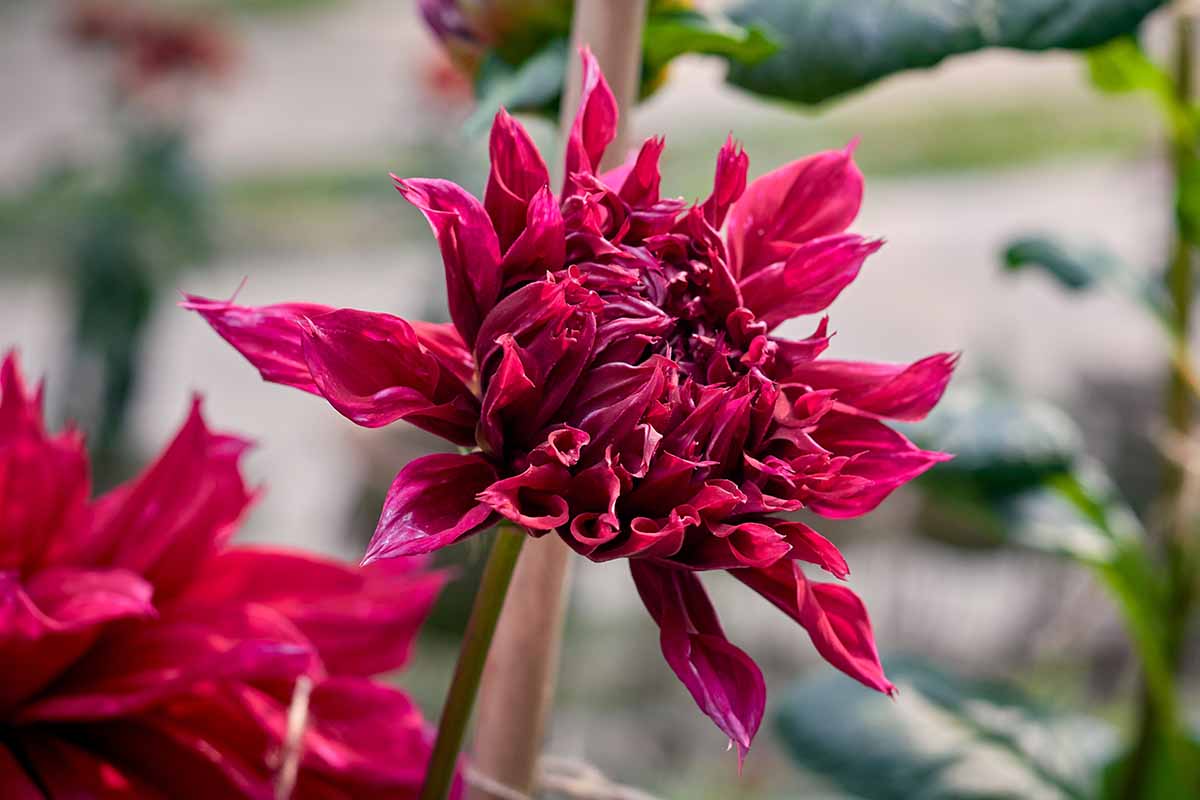
Cut back plants as outlined above and clean beds of plant debris by late autumn.
Your tubers will produce new growth again in spring. Our guide on how to grow delightful dahlias has all the cultivation details you’re looking for.
Zones 8-9
For gardens in Zones 8 and 9, you can also overwinter your tubers in place as perennials, but a moderate mulch of up to four inches is recommended for protection against hard frosts and infrequent cold spells.
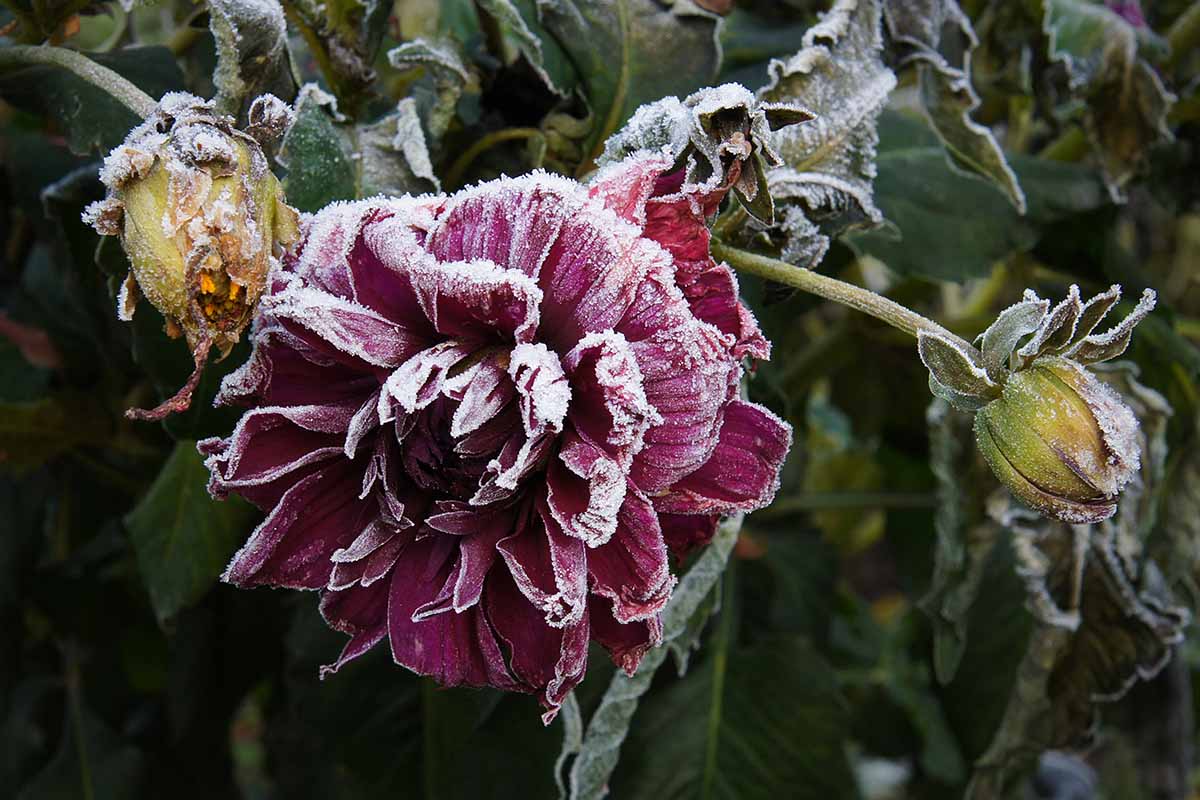
Cut back stems and clean beds as outlined above, then lay down a four-inch layer of mulch over the entire root zone.
Use dry materials such as bark mulch, shredded leaves, pine needles, untreated sawdust, straw, or wood chips but avoid materials that can become muddy or trap surface water, such as compost or leaf mold.
In spring after all danger of frost has passed, remove winter mulches.
Zones 6-7
Technically, gardens in Zones 6 and 7 are outside a dahlia’s hardiness capabilities.
But if they’re planted in a sheltered spot protected from cold winds, they may survive winter in situ with some extra protection.
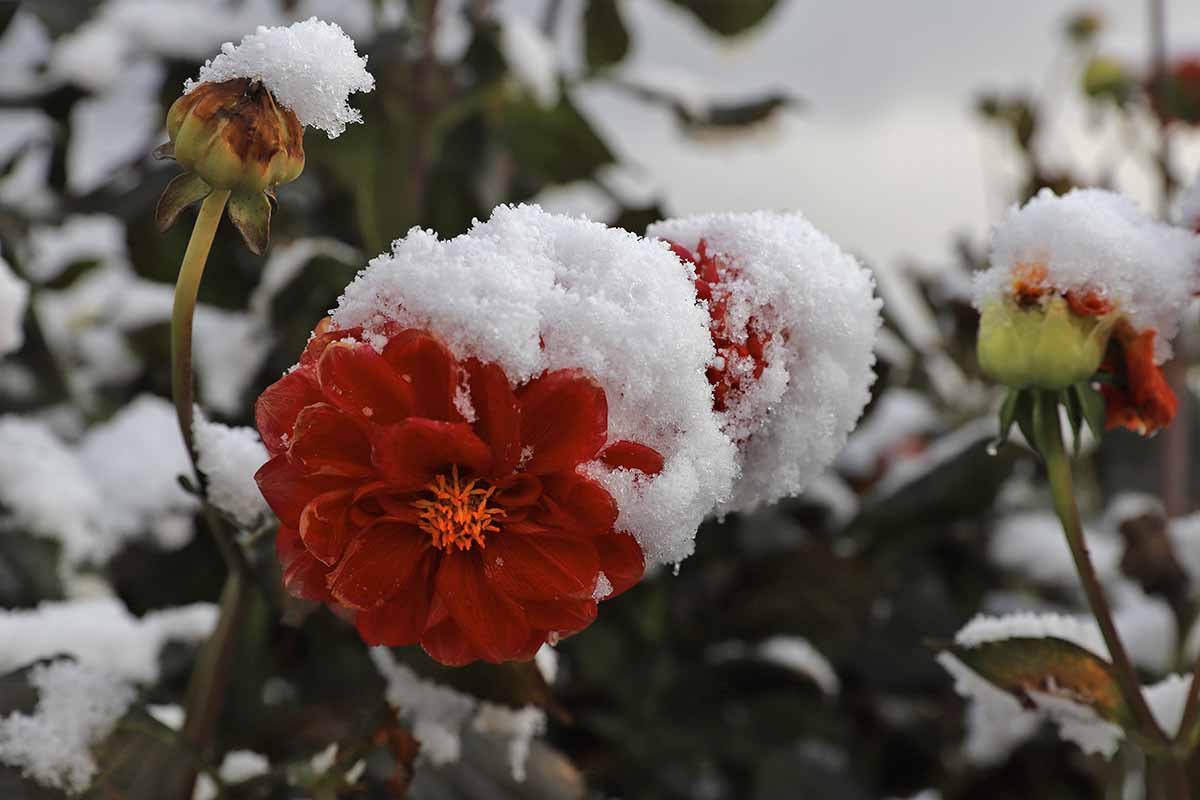
Cut stems and clean beds as outlined above, then add a four- to six-inch layer of dry mulch.
To add an extra layer of insulation, cover the dry mulch with materials that can trap warmer air without holding water, like overlapping evergreen boughs.
If no boughs are available, make a dome six to eight inches high with small branches and stems from deciduous shrubs, then cover the dome with a couple more inches of dry mulch materials, tenting the root zone.
Snowpack is a good insulator as well and assists in protecting tubers, but snowfall can be unreliable and shouldn’t be counted on. If snow arrives, it’s a nice bonus, but if it doesn’t, you’re already covered.
Once temperatures are warm enough in spring, remove all mulch materials.
Unfortunately, there are no guarantees your tubers will survive in these conditions, so if you’re at all unsure, dig them up in fall for winter storage.
Zones 5 and Below
For gardens in Zones 5 and below, there’s no chance your tubers will survive outdoors and they must be grown as annuals or lifted for replanting.
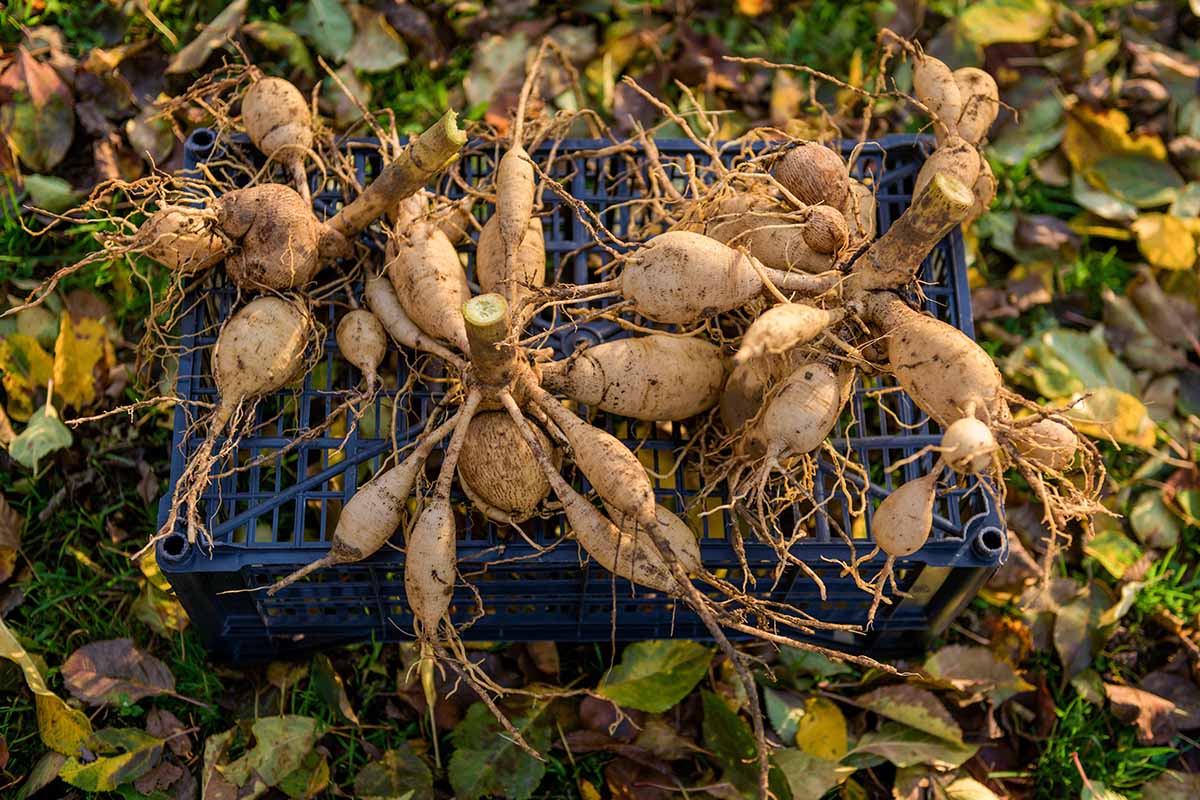
After cutting back the stems, lift and store your tubers for winter and replant in spring.
For a jumpstart on the growing season, you can start tubers in pots indoors six to eight weeks before your last predicted frost date and transplant out when temperatures are warm enough.
Winter Care for Dahlias in Containers
To overwinter container-grown plants, cut back the stems to about four inches in late autumn.
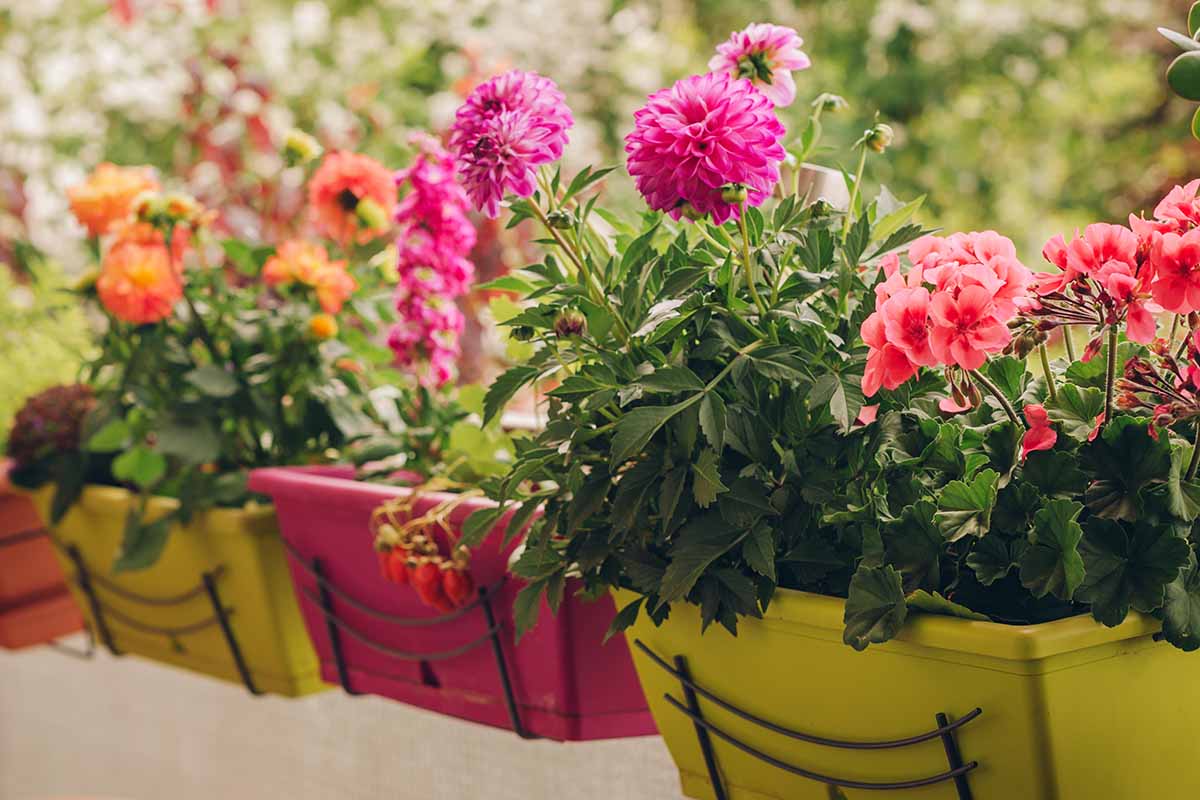
Move containers into a dry, dark space that doesn’t freeze. Allow the soil to dry out and don’t water again until the end of winter.
Once all danger of frost has passed, move containers back out to a full sun location and water deeply – then read up on how to grow dahlias in pots and containers for outstanding floral displays.
Alternatively, container-grown tubers can be lifted and stored for winter.
Showy Summer Flowers
At the warm end of their hardiness range, no extra protection is needed for dahlias to overwinter in the ground as perennials.
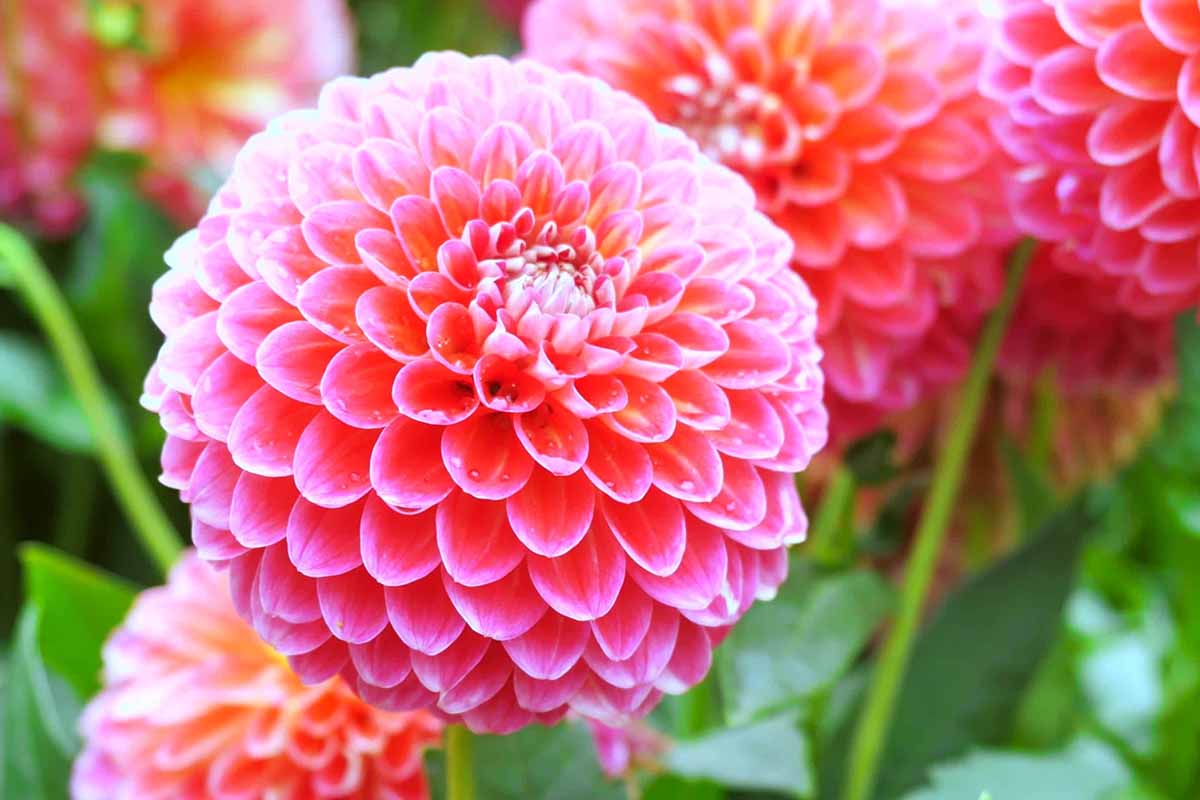
At the cool end, a winter mulch is beneficial for protection against occasional cold temperatures.
And outside of their range you’ll need to grow them more like spring-planted annuals, dying back at the end of the season, but lifted and stored over winter if you desire a repeat showing the following growing season.
Whichever way you cultivate them, dahlias are showy summer flowers that add enormous appeal to any garden!
How do you folks overwinter your tender tubers? Tell us about it in the comments section below.
And for more dahlia cultivation ideas, read these guides next:


